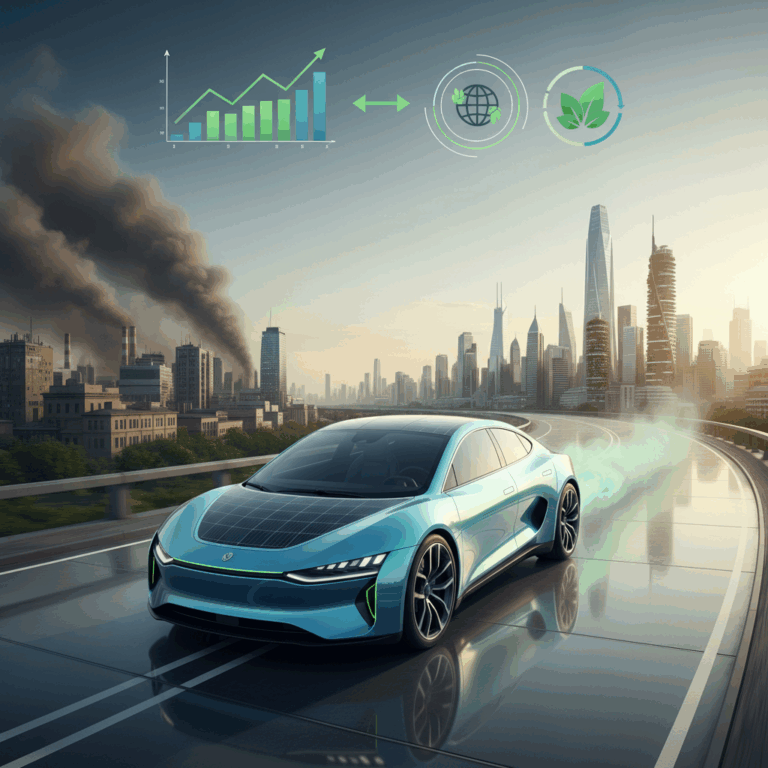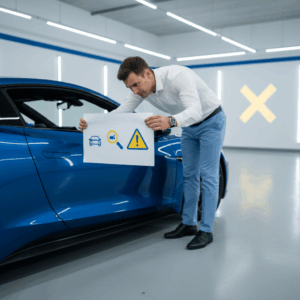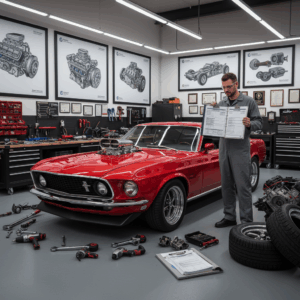Global Regulatory Trends in Car Emission Standards
The global push for stricter car emission standards is key to combating climate change. Governments worldwide are tightening rules to reduce vehicle CO2 emissions significantly. These regulations aim to drive innovation and sustainability in the automotive sector.
Stricter emission limits are pushing automakers to develop cleaner technologies and accelerate the shift to electric and alternative fuel vehicles. These evolving standards vary by region but share the common goal of lowering environmental impact. Compliance is becoming a central focus for manufacturers worldwide.
Regulatory trends also impact economies and industries, creating challenges and opportunities. Stricter standards compel manufacturers to invest in advanced technologies to avoid penalties and align with global climate goals. This shift influences the future of transportation and environmental policy.
European Union’s Stricter CAFE Standards
The European Union has significantly tightened its Corporate Average Fuel Economy (CAFE) standards. Starting in 2025, the CO2 emission limit is set at 93.6 grams per kilometer, pressing automakers to innovate rapidly. This reduction challenges manufacturers to improve fuel efficiency and electrify vehicle fleets.
These stricter norms encourage the adoption of electric vehicles and advancements in energy-efficient technologies. Non-compliance results in severe financial penalties, driving automakers to prioritize sustainability. The EU’s approach serves as a benchmark for global automotive emission regulation.
Overall, the EU’s CAFE standards exemplify how regional regulations can influence global automotive trends. By setting ambitious targets, they foster a competitive environment for green technology development. This regulatory environment aims at balancing economic interests with environmental responsibilities.
United States and China Emission Regulations
The United States, through the Environmental Protection Agency (EPA), has also implemented more stringent vehicle emission standards to improve fuel efficiency. These regulations aim to reduce greenhouse gas emissions while promoting innovation in cleaner vehicle technologies. The US market faces strong regulatory pressure to adapt quickly.
Similarly, China is adopting rigorous emission standards aligned with global efforts to reduce carbon footprints. These measures advance the transition toward electric and hybrid vehicles, recognizing the need to address urban pollution and climate change. China’s policies significantly impact the global automobile market.
The initiatives in the US and China reflect a shared commitment to environmental protection. Despite differing regulatory frameworks, both countries target substantial improvements in vehicle emissions. Coordinated global efforts contribute to a sustainable future by driving automotive industry transformation.
Technological Impact of Stricter Emission Rules
Stricter emission standards have accelerated the development of advanced vehicle technologies worldwide. Automakers invest heavily in cleaner, more efficient propulsion systems to meet new environmental targets. These innovations aim to reduce pollution and greenhouse gas emissions.
The shift towards greener technology has stimulated significant research and engineering breakthroughs. Batteries, fuel cells, and software enhancements are evolving rapidly to support low and zero-emission vehicles. These technological advances will shape future transportation norms globally.
The automotive industry must balance innovation with cost, performance, and consumer acceptance. As emission standards become more rigorous, the pace of technological change intensifies to deliver sustainable mobility solutions without compromising driving experience.
Advancement in Electric Vehicle Technology
The rise of electric vehicles (EVs) is a direct response to stricter emission limits. Improvements in battery energy density and charging infrastructure help EVs overcome range anxiety and usability challenges. These advances make EVs increasingly practical and attractive for consumers.
Automakers focus on lowering battery costs and extending lifespan to enhance affordability. Enhanced motor efficiency and lightweight materials contribute to greater overall vehicle efficiency. This progress underpins a major shift in personal and commercial transportation systems.
The integration of smart technologies also plays a critical role. Energy management systems optimize driving patterns and reduce emissions. Ongoing research explores solid-state batteries and other next-generation technologies to further improve EV performance.
Development of Hydrogen and Alternative Fuel Vehicles
Hydrogen fuel cell vehicles (FCVs) offer another promising pathway to zero emissions. FCVs generate electricity through hydrogen, emitting only water vapor. They provide fast refueling and long driving ranges, positioning them as an option for heavier vehicles and long-distance travel.
Alternative fuels such as biofuels, synthetic fuels, and natural gas complement the transition by lowering carbon footprints in existing combustion engines. These fuels enable gradual decarbonization while infrastructure for electric and hydrogen vehicles continues to expand.
Emerging Trends in Alternative Fuels
Blending biofuels with traditional fuels reduces net emissions immediately and supports crops that absorb CO2. Synthetic fuels, produced from renewable energy sources, have the potential to be carbon-neutral. Continued innovation is improving fuel availability and cost-effectiveness globally.
Challenges in Automotive Innovation
Transitioning to low-emission technologies presents several challenges. High research and development costs strain manufacturers, especially smaller firms. Balancing performance, affordability, and regulatory compliance requires strategic innovation and collaborative efforts.
Infrastructure development remains crucial. Expanding charging stations and hydrogen refueling networks requires coordination among governments, industries, and consumers. Moreover, supply chain constraints, such as rare minerals for batteries, pose significant hurdles.
Consumer acceptance and market readiness also influence technological adoption. Education and incentives help overcome hesitancy. Ultimately, innovation must align technology, policy, and market dynamics to ensure a sustainable automotive future.
Economic Consequences for Automakers
Stricter car emission standards impose significant economic challenges on automakers worldwide. Companies must invest heavily in cleaner technologies to meet these new requirements. Failure to comply can result in costly fines and damage to brand reputation.
The economic pressure compels manufacturers to innovate rapidly, balancing costs with regulatory demands. Automakers face decisions on investing in electric vehicles, alternative fuels, and efficient production methods to remain competitive. These adaptations shape the industry’s future sustainability.
Overall, the evolving regulatory landscape influences strategic planning, financial allocation, and market positioning. Automakers that adapt successfully can capitalize on new opportunities, while others risk fiscal losses and restricted market access.
Costs and Penalties for Non-Compliance
Failure to comply with stringent emission standards leads to substantial financial penalties for automakers. Governments impose fines based on excess emissions, pressuring companies to reduce fleet-wide CO2 levels promptly. These penalties can reach billions in some markets.
Additionally, non-compliance affects market eligibility, limiting a manufacturer’s ability to sell vehicles in regions with strict regulations. This risk drives urgent investments in emission-cutting technologies to avoid punitive economic impacts. Delays can be costly both financially and reputationally.
The compliance costs are amplified by ongoing tightening of standards, requiring continuous upgrades to technology and production processes. This persistent financial burden challenges automakers, especially smaller companies, to maintain profitability and market presence.
Market Adaptation and Strategic Shifts
Automakers respond to these economic pressures by shifting market strategies towards electrification and sustainability. Many firms are redesigning product lines to prioritize electric and hybrid vehicles, aligning their offerings with regulatory demands and consumer trends.
Strategic alliances and investments in research accelerate innovation, allowing manufacturers to share development costs and optimize resources. This collaborative approach enhances adaptability and facilitates faster market entry for low-emission vehicles. Flexibility in production is also increasing.
Moreover, automakers are diversifying portfolios to include alternative fuels like hydrogen and synthetic fuels. This broader approach helps mitigate risks tied to regulation changes and varying regional standards, supporting long-term business resilience in a shifting market landscape.
Environmental and Societal Benefits
Stricter car emission standards play a vital role in enhancing urban air quality. Reduced vehicle emissions directly decrease pollutants like nitrogen oxides and particulate matter, leading to healthier living conditions. Cleaner air reduces respiratory and cardiovascular diseases among urban populations.
Beyond health improvements, lower emissions contribute to quieter and less congested cities. This results in improved overall quality of life. Urban environments benefit from greener transportation options as emissions decline, fostering sustainability and community well-being.
Improvement in Urban Air Quality
Reduced emissions from vehicles significantly cut harmful pollutants in city air. This leads to fewer incidents of asthma and chronic respiratory problems, benefiting vulnerable groups like children and the elderly. Cleaner air supports public health by limiting exposure to toxic substances.
Stricter standards encourage the adoption of electric and low-emission vehicles, diminishing exhaust fumes drastically. This transition mitigates smog and reduces long-term environmental damage in dense urban areas. The collective impact improves livability and reduces healthcare costs.
Efforts to improve urban air quality also align with international health recommendations. Cities implementing these standards often see measurable drops in pollutant concentrations within years. Enhanced monitoring and policies ensure continued progress and community awareness.
Contribution to Climate Neutrality Goals
Stricter emission rules are critical for meeting global climate neutrality targets. By lowering CO2 emissions from one of the largest sources—cars and trucks—these policies make a substantial contribution to reducing greenhouse gases. This supports international agreements like the Paris Accord.
Automakers’ shift to electric and hydrogen technologies powered by renewable energy accelerates decarbonization efforts. This transformative change reduces dependency on fossil fuels, enabling sustainable transport systems aligned with net-zero ambitions. It is a foundational step towards a climate-neutral future.
These standards also drive innovation and investment beyond the automotive sector. Energy, infrastructure, and urban planning adapt to support cleaner transportation, multiplying the effects on climate goals. Coordinated policies maximize impact and ensure measurable climate benefits.







